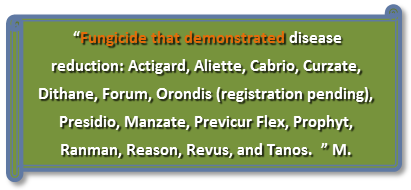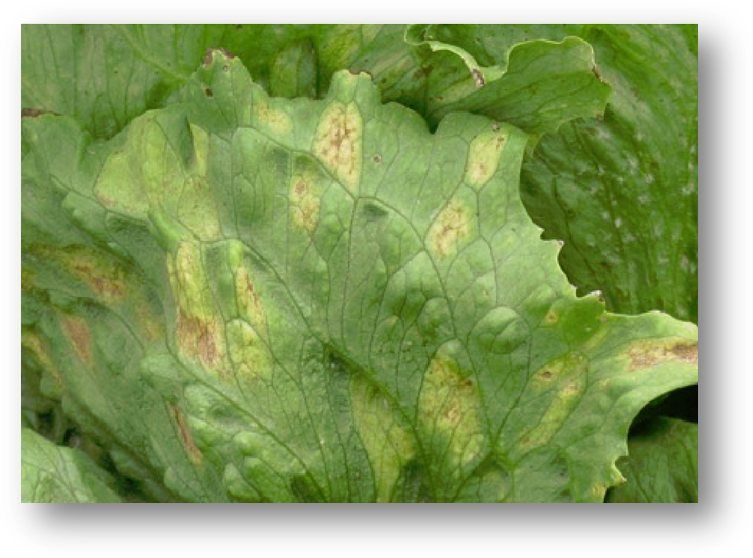
We are approaching that time in the desert lettuce production season when downy
mildew can become a concern. Development of downy mildew on lettuce is strongly
regulated by the presence and duration of free moisture on plant leaves. This moisture
can be supplied by rainfall, dew, and sprinkler irrigation. Optimal management of
downy mildew is achieved by having a fungicide in place before disease symptoms
become apparent. Less than optimal control of downy mildew will result when fungicide
applications are not started until downy mildew symptoms are seen on plants. This
is due to the fact that there is a lag time between infection by the pathogen (Bremia
lactucae) and appearance of visible symptoms. This incubation period can range from
10 or more days, depending on temperature, relative humidity, and lettuce variety
susceptibility to the pathogen. By the time lettuce downy mildew lesions are observed,
many more are likely present but have not yet matured to a sufficient extent to
be visible. Fungicide evaluation trials conducted at the Yuma Agricultural Center
in Arizona as well as in other states have demonstrated statistically significant
reduction in disease by application of fungicides such as Actigard, Aliette, Cabrio,
Curzate, Dithane, Forum, Orondis (registration pending), Presidio, Manzate, Previcur
Flex, Prophyt, Ranman, Reason, Revus, and Tanos. Several different modes of action
are represented by these compounds, thus facilitating alternation among different
chemistries for effective disease management as well as pathogen resistance management.
A new publication entitled
“Biology and Management of
Downy Mildew of Lettuce” provides additional information on the biology
and management of this disease and is available.

Lettuce Downy Mildew
Click picture to listen to Mike's update





